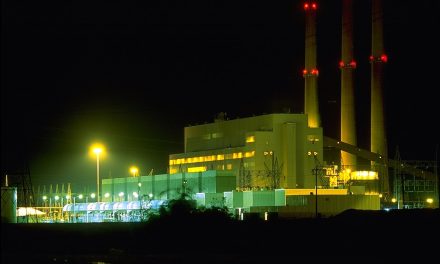From Otis White’s Urban Notebook:
What is the deal with trolleys? Every city, it seems, is suddenly crazy about streetcars. On the surface, this makes no sense. They’re an antiquated form of transportation (most cities ripped up their streetcar lines by the 1950s), they’re slow (top speed: 5 miles an hour), stop at nearly every corner and run along lines that average only two and a half miles in length. So who wants to go for a short, slow ride?
Before we answer that, some definitions: Actually, the proper name is streetcar, although most people prefer calling them trolleys. These short, squat rail cars run on electricity, usually from overhead wires. (The poles connecting the cars to the wires are trolley poles, which is where the more popular name comes from.) Streetcars are different from light rail in a number of ways: They’re slower, shorter (both in length of vehicle and route) and almost always run on streets, unlike light rail which sometimes runs on dedicated rights of way. Oh, and there are no stations. If you want to board a streetcar, you stand next to the streetcar sign or just wave at the conductor, although many streetcars are so slow you can just hop aboard as it passes.
In the early 20th century, nearly every city, large and small, had streetcar lines. Starting in the 1930s and continuing through the 1950s, cities shut them down in favor of the more flexible, more seemingly modern diesel buses. (General Motors played a role in this, buying up streetcar systems in some cities. But even had GM not given its push, streetcars were dying out after World War II.)
And now they’re back. It’s hard to make an exact count, since the difference between light rail and streetcar systems can be fuzzy, but there are at least 20 cities with streetcar lines and double that number with systems on the drawing boards. (Notable places with new streetcar lines: Tampa, Memphis and Charlotte) Big cities, too, are fascinated by streetcars. There are serious proposals to bring streetcars back to Atlanta and Seattle.
Why? There seem to be three motivations: the belief that cute, clanging trolleys will help with tourism, the idea that they’re a great form of “circulator transit” (where people move from one side of a business district or college campus to another), and the notion that they allow for greater residential density in in-town neighborhoods as people hop on the streetcar for a short ride downtown. There’s a fourth motivation: People just plain like them, in the same way they like Art Deco architecture or antique automobiles — as nostalgia.
But are any of these motivations good, rational reasons for spending millions to lay track, string overhead wires and buy antique streetcars? Yes, but only if the streetcar line is built as part of a larger plan of development (which, come to think of it, is how all transportation should be built).
Portland, Ore., showed how to do this when it built a streetcar line to connect two nearby neighborhoods with downtown. Part of the deal: Developers in these areas had to build much greater densely than they had planned. (On one tract, the city boosted zoning from 15 units per acre to 125.) The density and the streetcar worked hand in hand: More people on the street meant more riders; the streetcar line, in turn, meant less parking was needed, so more housing could be built. Important side benefit: The streetcar and the resulting density helped create one of Portland’s liveliest downtown neighborhoods.
Tampa, alas, showed how not to do it. The 2.5-mile line from downtown to historic Ybor City couldn’t make up its mind whether it was a tourist attraction or a serious way to get to work. (Must be a tourist attraction: The Tampa streetcar starts running only at 11 a.m. and costs $2 to ride.) Result: a scary operating deficit and no easy way of turning things around.
Footnote: So who doesn’t like trolleys? Transit systems, which are run by people who measure effectiveness by efficiency (number of people moved from point A to point B every X minutes). As a result, most streetcar systems today are sponsored, at least initially, by city governments, developers, business associations or nonprofits. Every interest, that is, but the transit system.



